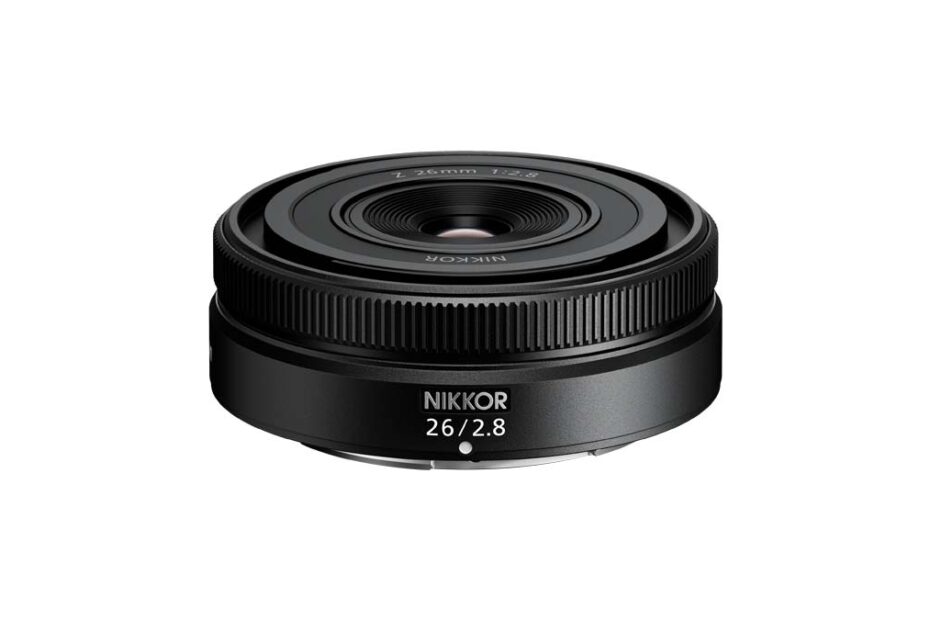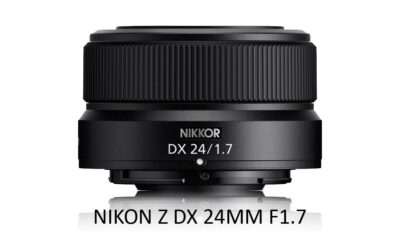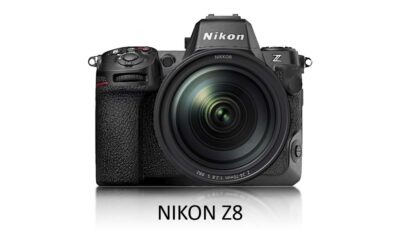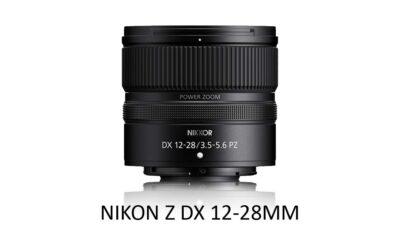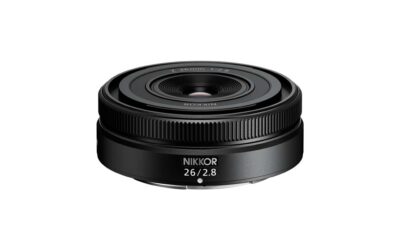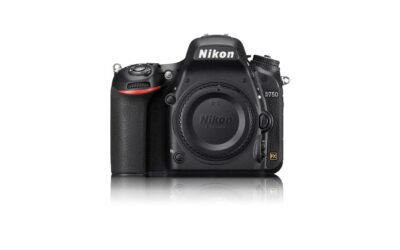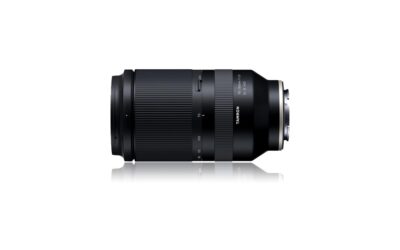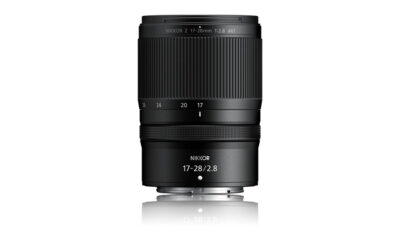The Nikon Z 26mm F2.8 – a compact 26mm lens designed, according to Nikon, “as an ideal lens for advanced amateur photographers who take their camera everywhere so as not to miss a moment.”
And that sounds about right, with its smartphone-esque 26mm focal length producing a wide, user-friendly 79-degree angle of view and featherweight build. But how does the Nikon Z 26mm F2.8 compare with existing Nikon primes such as the Nikon Z 28mm F2.8 and Nikon Z 40mm F2? Let’s find out! Jump to Conclusion
What is the Nikon Z 26mm F2.8 Lens?
The Nikon Z 26mm F2.8 is a tiny 125-gram (4.5oz) full-frame prime lens for Nikon’s Z mount and is designed as an everyday lens for heavy gravity days.
Indeed, the Nikon Z 26mm F2.8 is absurdly light for a full-frame lens and is less than 24mm (1 inch) in length. As a result, the Nikon Z 26mm is now, by some margin, the smallest lens for Nikon’s Z mount.
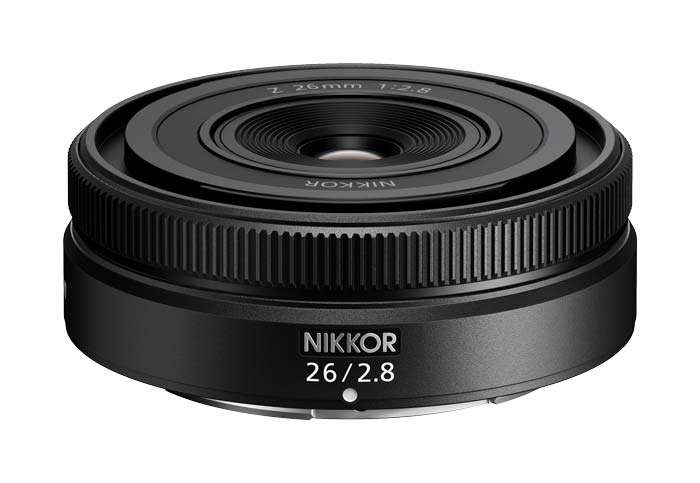
Focal length
As the name suggests, the Nikon Z 26mm F2.8 features a 26mm focal length resulting in a smart-phone style angle of view of 79 degrees. As a result, the Nikon Z 26mm F2.8 fits the brief as a decent take-in-the-scenes lens for your next holiday.
Alternatively, slap the Nikon Z 26mm F2.8 onto one of Nikon’s APS-C Z-Mount cameras, such as the Nikon Z50 or ZfC, and enjoy an angle of view of 57 degrees – similar to that of a 40mm lens on a full-frame camera. Which, in my opinion, is even better for a walkabout lens. Read What is Focal Length in Photography.
Aperture
The Nikon Z 26mm F2.8 features a moderately bright F2.8 allowing your camera’s sensor to soak up almost twice as much light as the average kit lens set to a similar focal length.
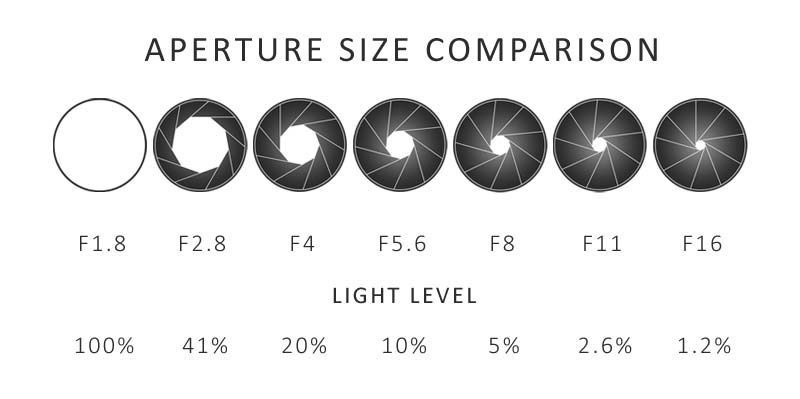
Furthermore, it should be possible to squeeze a little background blur out of the lens – despite the Nikon Z 26mm’s shorter blur-unfriendly focal length. Read What is Aperture in Photography.
Nikon Z 26mm F2.8 Image Quality
I have yet to use the Nikon Z 26mm F2.8, but its MTF charts suggest it’s very sharp at the center with progressive and heavy fall-off towards the corners. While this is less than ideal, it is not surprising for a wide-angle pancake lens and entirely suitable for its intended use.
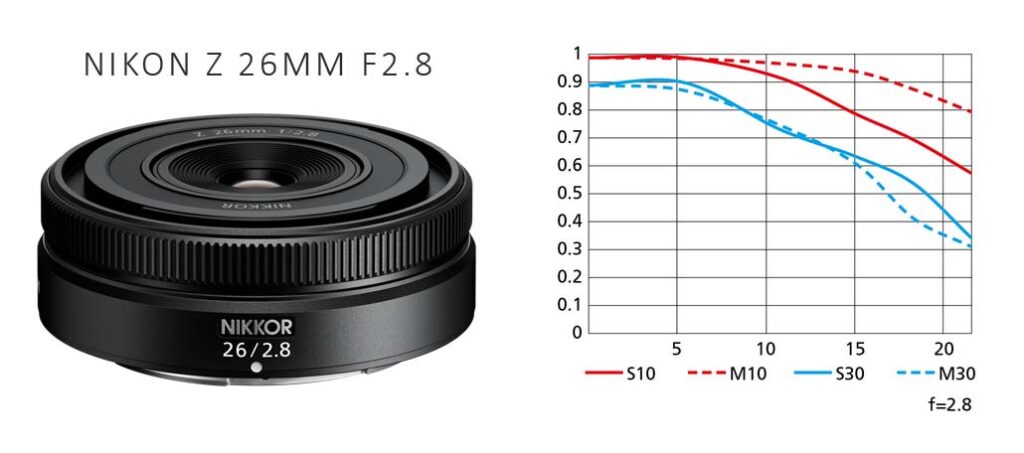
Nikon Z 26mm F2.8 Features
Being so small, the Nikon Z 26mm F2.8 is hardly feature rich. However, it does pack a single customizable control ring to which you can assign functions such as Apertures and Exposure Compensation.
Nikon also suggests an unspecified quantity of dust and drip resistance while offering no guarantees. This is pretty typical of Nikon – even for their more expensive lenses.
Nikon Z 26mm F2.8 Specifications
| Nikon Z 26mm F2.8 | |
| Price (US$) | $499 |
| Focal length | 26mm |
| Angle of view | 79 Degrees |
| Maximum aperture | F2.8 |
| Minimum aperture | F16 |
| Diaphragm blades | 7 Rounded Blades |
| Lens construction | 8 Elements in 6 Groups |
| Optical Image Stabilization | No |
| Minimum focus distance | 20cm |
| Maximum reproduction ratio | 0.19x |
| Filter-attachment size | 52mm |
| Dimensions (approx) | 70mm x 23.5mm |
| Weight (approx) | 125g |
Who is the Nikon Z 26mm F2.8 for?
As a walkabout lens, the Nikon Z 26mm F2.8 lens could be for almost anyone. But, in my option, 26mm is getting a little wide for an everyday lens.
On the one hand, the Nikon Z 26mm F2.8 wide angle-of-view will be suitable for landscapes, scenes, and group photos. On the other, its short focal length will distort up-close shots of loved ones (and less loved ones) by enlarging noses and shrinking eyes and ears.
Furthermore, the Nikon Z 26mm F2.8 suffers a maximum magnification ratio of 0.2x, which isn’t surprising or particularly useful.
However, I would enjoy using the Nikon Z 26mm F2.8 with one of the Nikon’s APS-C Z-Mount cameras as its 57-degree 40mm-equivalent focal length is close to ideal – for me, at least.
The Nikon Z 26mm F2.8 Compared.
So, how does the Nikon Z 26mm F2.8 compare against the Nikon Z 28mm F2.8 and Nikon Z 40mm F2?
| Nikon Z 26mm F2.8 | Nikon Z 28mm F2.8 | Nikon Z 40mm F2 | |
| Price (US$) | $499 | $299 | $299 |
| Focal length | 26mm | 28mm | 40mm |
| Angle of view | 79 Degrees | 75 Degrees | 57 Degrees |
| Maximum aperture | F2.8 | F2.8 | F2 |
| Minimum aperture | F16 | F16 | F16 |
| Diaphragm blades | 7 Rounded Blades | 7 Rounded Blades | 9 Rounded |
| Lens construction | 8 Elements in 6 Groups | 9 Elements in 8 Groups | 6 Elements in 4 Groups |
| Optical Image Stabilization | No | No | No |
| Minimum focus distance | 20cm | 19cm | 29cm |
| Maximum reproduction ratio | 0.19x | .2x | 0.17x |
| Filter-attachment size | 52mm | 52mm | 52mm |
| Dimensions (approx) | 70mm x 23.5mm | 70mm x 43mm | 71.5mm x 45.5mm |
| Weight (approx) | 125g | 155g | 170g |
Nikon Z 26mm F2.8 vs Nikon Z 28mm F2.8
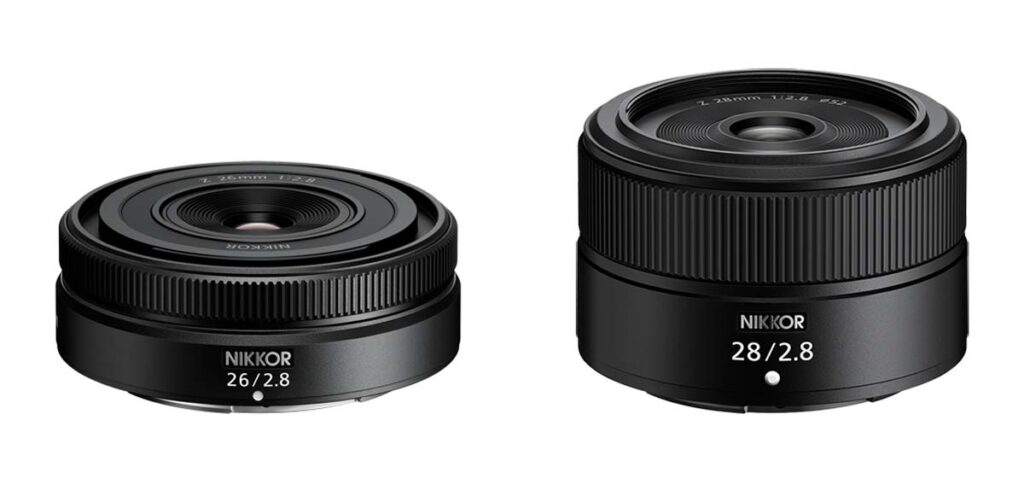
Compared to the Nikon Z 28mm F2.8, the Nikon Z 26mm is much smaller and yields a wider 79-degree angle-of-view versus the 28mm’s 75 degrees.
Regarding features, both are as well specified as a drop-toilet. As for image quality, both lenses are broadly similar, with the 26mm sharper at the center and the 28mm better at the corners.
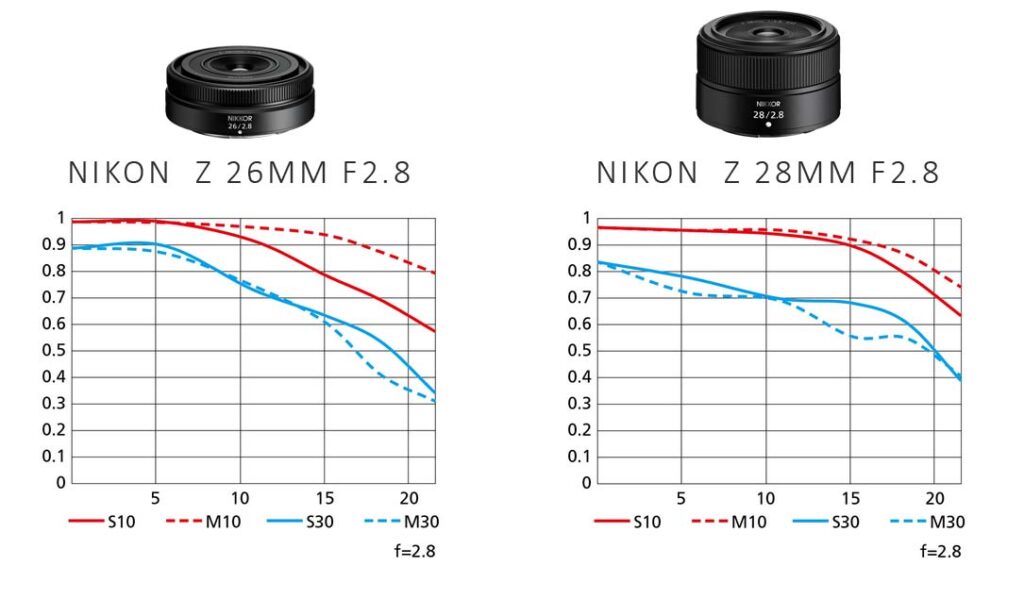
However, here’s where it gets complicated. At $299, the Nikon Z 28mm F2.8 is much cheaper than its $499 vertically-challenged rival. And while the Nikon Z 28mm is larger and heavier than the hyper-lean Nikon Z 26mm – it’s still very small and light by any other comparison.
Nikon Z 26mm F2.8 vs Nikon Z 40mm F2
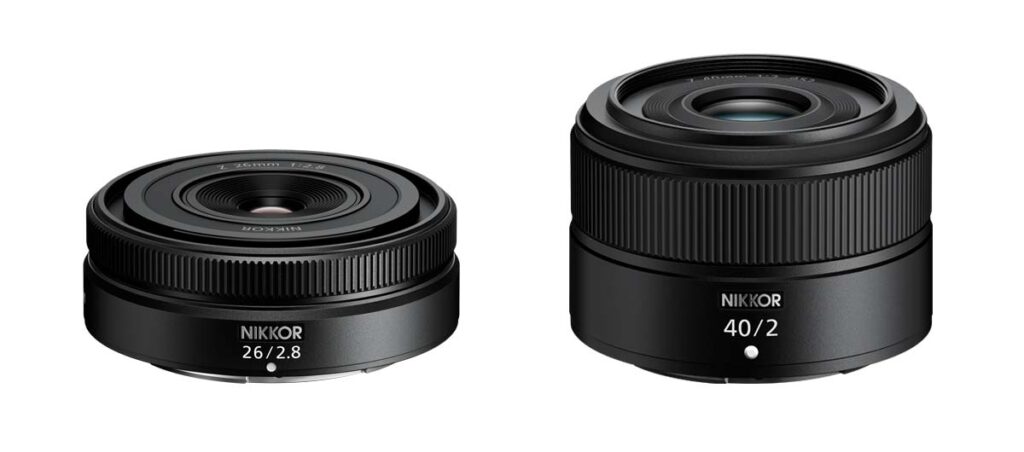
The Nikon Z 40mm F2 is a moderately expensive lens that feels cheaper than more affordable alternatives. On the plus side, it’s very light and compact and, compared to the Nikon Z 26mm F2.8, has a twice-as-bright F2 aperture for more light, lower ISO, and superior background blur.
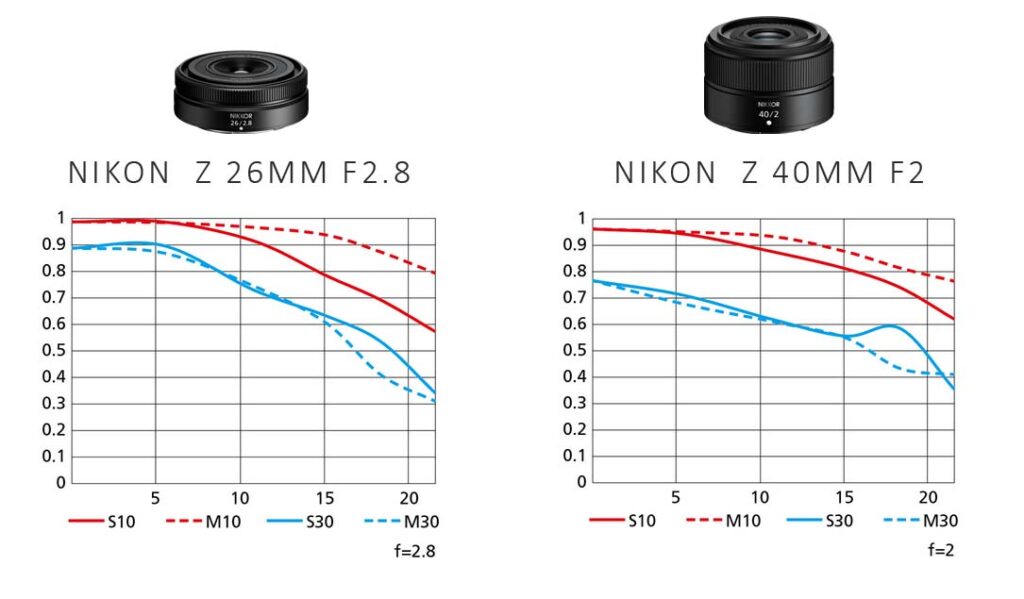
And for me, 40mm is a better focal length for everyday photography. Thus, I would choose the brighter and cheaper Nikon Z 40mm F2 for these reasons.
Get Discounts on Photo Editing Software
Subscribe to my weekly newsletter and be notified of deals and discounts on photography software from ON1, Adobe, Luminar, and more. Spam Promise: Just one email a week, and there’s an unsubscribe link on every email.
Conclusion
Do we need the Nikon Z 26mm F2.8 and Nikon Z 28mm F2.8? Well, Nikon certainly thinks so. On the upside, the Nikon Z 26mm F2.8 is even more diminutive than the already small Nikon Z 28mm F2.8.
However, the Nikon Z 26mm’s dainty dimensions come at a premium that may be difficult to justify, particularly when considering the ever-so-slightly heftier Nikon Z 28mm F2.8 with its built-in $200 saving.
Whether you consider a 26mm lens ideal for a walkabout is up to you. Since I photograph both scenes and people, I prefer longer focal lengths and, as a result, would go for the Nikon Z 40mm and its faster, blurrier F2 aperture. To that end, the Nikon Z 26mm F2.8 will suit Nikon’s smaller APS-C cameras thanks to its diminutive size and APS-C full-frame equivalent focal length of 57 degrees.
If you liked this post, subscribe to my weekly newsletter and receive deals and discounts on photography software and gear. Subscribe Now.
What do you think? Will you be buying a Nikon Z 26mm F2.8? Leave a Comment.
